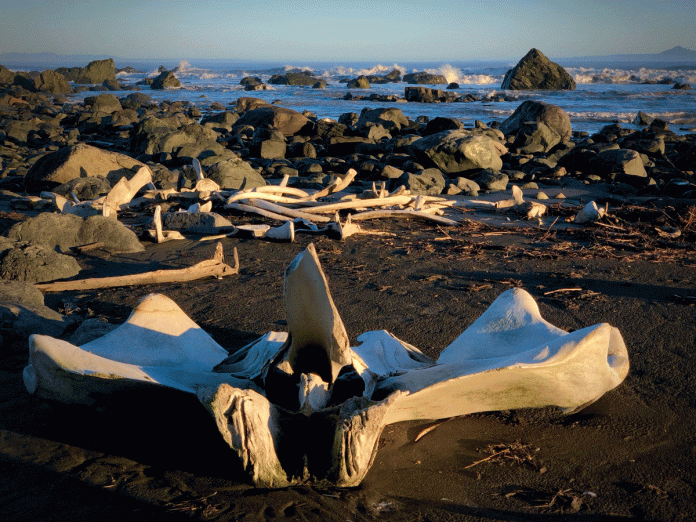
A preliminary decision by the Alaska Department of Natural Resources to allow for oil and gas exploration in the Gulf of Alaska has opened the way for public comment through Oct. 4 on whether work may begin at the historic Katalla site.
The state division of Oil and Gas has issued a lengthy Gulf of Alaska oil and gas exploration license preliminary written findings, a copy of which is available at the agency’s website at dog.dnr.alaska.gov/Services/ExplorationLicensing?page=explorationlicensing.
The agency notes in its 256-page findings that it has determined that granting the 10-year license “will best serve the interests of the state of Alaska.”
James Beckham, acting director of the Division of Oil and Gas, states in the document that the state is sufficiently empowered to ensure that the licensee conducts its activities in a manner that protects the environment and maintains opportunities for existing and anticipated uses. The agency has declined, at the request of Bill Stevens, president of Cassandra Energy Co. of Nikiski, to provide contact information for the company, which is seeking exclusive rights to explore for oil and gas in 65,773 acres of state land located onshore and offshore surrounding Kanak Island, from Point Martin south to the Okalee Spit in Controller Bay.
The area, surrounded in large part by Chugach National Forest, includes the eastern edge of the Copper Rier Delta State Critical Habitat area, Kanak Island and waters around the mouths of the Bering, Nichawak, Campbell and Edwards rivers.
The preliminary decision calls for Cassandra Energy Co. to pay a one-time $1 per acre license fee, and states that the exploration license will be terminated if the licensee does not complete at least 25 percent of the total work commitment within four years of receiving the license.
The prospect of renewed efforts to explore for oil and gas in that area raised alarms for Wendy Ranney, who with her husband Steve owns the Orca Adventure Lodge in Cordova. The couple also own property in the Katalla area where they take clients on guided wildlife and fishing adventures. The Ranneys have spent over 20 years hauling junk from the historic old townsite at Katalla, once a boom town of 10,000 people, and Steve Ranney takes great pride in what he has done to return streams in the area to sustainable fisheries, she said.
Any kind of oil and gas exploration activity in that area stand to devastate the watershednshe said. The proposed project “is unrealistic and frankly ridiculous,” she said.
“This same company tried this before, and it did not go well. It is not really feasible. The Katalla River changed with the 1964 earthquake. It is high risk for large vessels,” she said.
The last time exploration was tried there by that company they got a barge stuck on Strawberry Bar in the Hinchinbrook Island, she said.
“I’d say that is an environmental impact right there,” she said. “They left a giant mess. It’s a very pristine area. the only inhabitants there are us. We have a family camp and a fish camp. We take clients out for silver salmon fishing. Their proposal to bring in a barge in September is smack dab in the middle of my fishing season.”
The Katalla area itself is also simply a hard area to access, she said.
“Katalla is where storms are born,” Ranney said. “It is not an easy place to get to.”
The Ranneys access the area via their private airstrip. People can get in and out on the river at low tide, but that’s a high-risk option, she said.
Exploration for oil and gas in the Katalla area dates back to 1901, as former Anchorage mayor and Alaska oil historian Jack Roderick notes in “Crude Dreams, a personal history of oil and politics in Alaska.”
British oil expert Sir Thomas Boverton Redwood first noted the oil potential of Katalla in 1900 and by 1901 the British were drilling in Katalla Meadows, from a depth of 365 feet, pumping at least 50 barrels of oil a day. Two more wells were drilled and then a fourth one, which turned out to be dry. When the oilfields did not live up to British expectations, they sold their interests to a Washington state firm, Amalgamated Development, for $300,000. Others, including Chevon, also expressed interest in the area.
Despite a warning from a geologist with Toronto Imperial Oil Co. in 1922 that the odds of commercial success there were too great the Kennicott Copper Corp. later bought Chilkat Oil Company’s Katalla claims, and a Mobil geologic field party also recommended drilling the old Katalla field, or on the shore of nearby Bering Lake, Roderick noted.
By 1938, Chveron geologist G. Dallas Hanna declared that the region was filled with “countless blasted hopes and disappointments. Millions of dollars have been spent fruitlessly on projects that doubtlessly seemed commercially feasible at the time, but which were destined to fail for one reason or another,” Hanna said.
Now the state is opting for yet another exploration effort.





